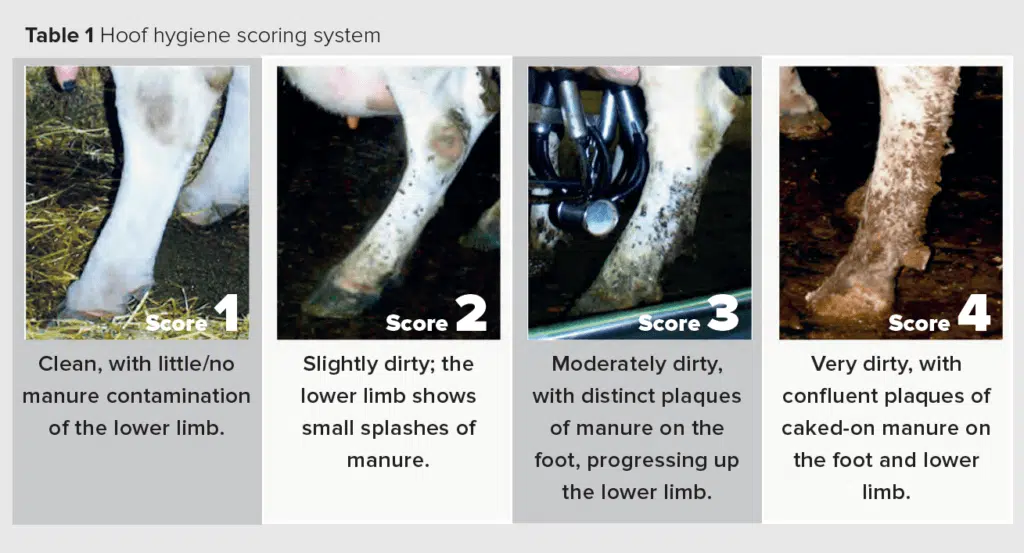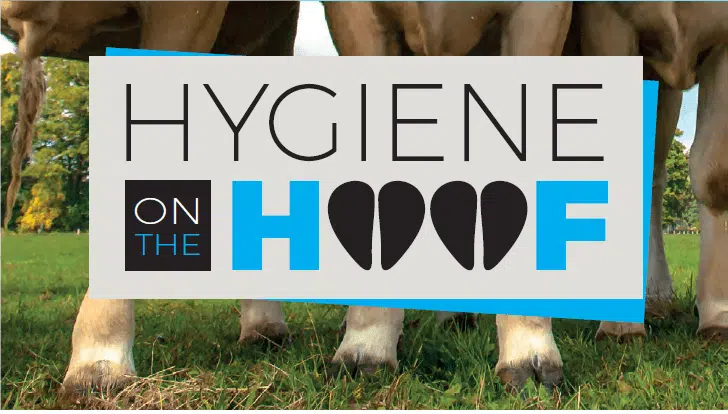Lameness is a huge cost factor for many dairy operations, and infectious claw lesions can play a major role because of their influence on lameness in the herd. Proper assessment and control are needed to prevent further problems, and autumn is the perfect time to do this.
Hoof lesions and footbaths
The most common types of infectious claw lesions in the bovine hoof include digital dermatitis (hairy heel wart) and foot rot, as well as heel erosion and interdigital dermatitis. A prerequisite for the development of these infectious claw lesions is injury to the skin between the claws or in the heel bulb region caused by a foreign object or maceration of the skin by water, faeces and/or urine. The correct use of footbaths is critical for the control of infectious lesions, but when it comes to designing a hoof bathing programme, one size does not fit all. Herds that maintain excellent hygiene standards may need infrequent footbaths. In contrast, in herds where leg hygiene is poor, more intensive programmes must be carried out involving more frequent hoof bathing.

If the footbath is used incorrectly, it can become a source of transmission of further infection. Footbath frequency (number of baths per week) is dependent on several risk factors for infectious lesions, including:
- the number of infected individuals present in the herd;
- the frequency of introduction of new animals into the herd;
- wet conditions and/or muddy areas; and
- hoof hygiene.
Hoof hygiene assessment
Hoof hygiene is assessed by scoring at least 20% of the cows in each pen using a four-point system (Table 1). The herd is then classified as per Table 2.

Be practical
Digital dermatitis (hairy heel wart) is usually the most prevalent lesion, with a rather complicated disease pattern. The acronym, FIGHTERS, may assist you in controlling the disease on the farm.
Footbath
Use an effective footbath, with the appropriate dimensions and the correct chemicals.
Infection status
Identify the current level of infection in the herd by visual inspection of the stage of the lesions.
Group
Identify which group of animals is at the highest risk of infecting the rest of the herd.
Hygiene
It is important to reduce manure build-up in
areas of high cow flow.
Trimming
Use a professional hoof trimmer who understands
the disease.
Early topical treatment
Use hoof wraps as part of the treatment, especially when dealing with M2-stage lesions.
Record-keeping
Use commercially available software or apps to
simplify record-keeping.
Skin quality and protection
Make optimum use of nutritional supplements, such as complexed performance minerals, to protect the skin.
Conclusion
It is important to understand and manage the factors that influence leg hygiene.
- Stocking rate: Prevent excess manure per unit area.
- Stage of lactation: More liquid faeces are produced in early lactation than in late lactation.
- Freestall pen design: Three-row pens have 20% less surface area than pens with two rows.
- Freestall slope: A minimum slope of 1% is needed.
- Manure scraping: Manure should be scraped at least two to three times a day.
Managing infectious lesions is a critical part of ensuring cow comfort and controlling lameness in dairy herds.









